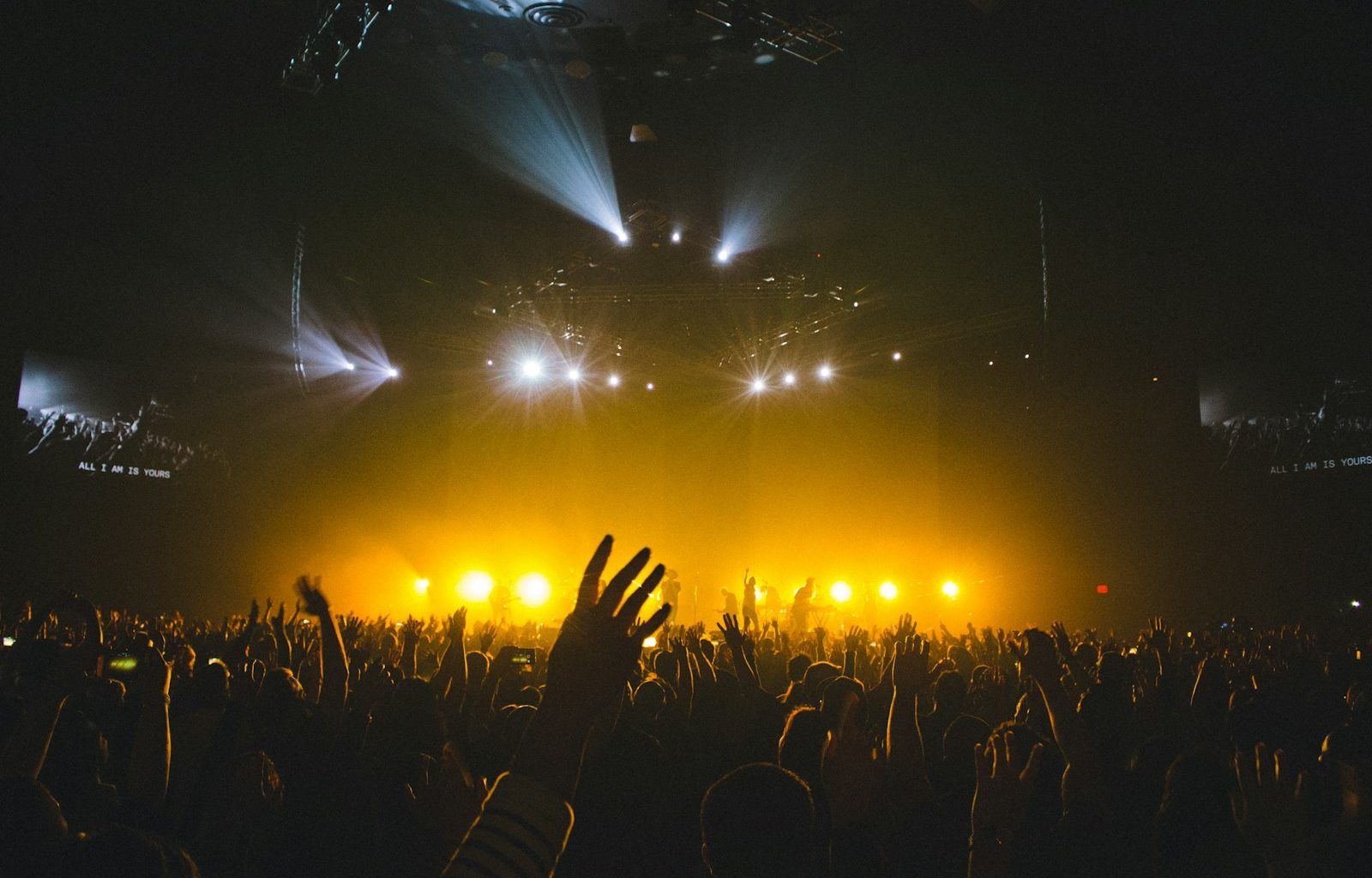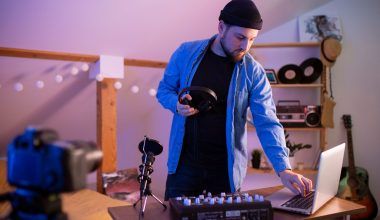If you’ve ever been to a live concert, you might have heard someone mention the “mix.” But what does mix mean at a concert? It’s one of those terms that gets thrown around a lot in the music world, and if you’re not familiar with it, it can be a little confusing. Don’t worry—we’re here to break it down in simple terms. By the end of this blog, you’ll not only understand what a mix is but also why it’s so important to your concert experience.
The Basics of a Mix
At its core, the “mix” refers to how all the different sounds in a concert are balanced and blended together. Think about it—when you’re listening to a band perform, you’re hearing vocals, guitars, drums, keyboards, and maybe even a brass section. If these sounds aren’t properly balanced, it can make the performance sound chaotic or muddy. The mix ensures that each instrument and vocal can be heard clearly and that they all work together harmoniously.
The person responsible for this is usually the sound engineer. They’re the unsung hero of any concert, working behind the scenes to make sure everything sounds just right. Using a mixing console, they adjust levels, tones, and effects in real time to deliver the best possible audio experience.
Why the Mix Matters
Imagine going to a concert where the lead singer’s voice is drowned out by the drums. Or maybe the bass is so overpowering that it makes your chest vibrate uncomfortably. A bad mix can ruin a great performance, no matter how talented the musicians are. On the flip side, a good mix can elevate the experience, making every song sound crisp, clear, and emotionally impactful.
The mix is especially important in large venues, where sound can easily become distorted. A skilled sound engineer knows how to adjust the mix to account for the acoustics of the space, ensuring that the audience gets the best sound quality no matter where they’re sitting or standing.
The Role of the Mixing Console
The mixing console, often called the soundboard, is the tool that makes it all happen. This is where the sound engineer controls everything—from the volume of the lead singer’s microphone to the amount of reverb on the guitar. Modern mixing consoles are incredibly advanced, with hundreds of channels and digital features that allow for precise adjustments.
If you’ve ever noticed a large table covered in knobs and sliders at the back of a concert venue, that’s the mixing console. It might look intimidating, but it’s essentially the command center for the entire sound experience.
Front-of-House vs. Monitor Mix
When we talk about the mix, it’s important to note that there are actually two different kinds. The “front-of-house” mix is what the audience hears. This is the main mix that the sound engineer focuses on to ensure that the performance sounds great in the venue.
The other type is the “monitor mix,” which is what the musicians hear on stage. This mix is tailored to help them perform at their best. For example, the drummer might need to hear more of the bass guitar to stay in rhythm, while the lead singer might need more of their own voice to stay in tune. Monitor mixes are delivered through floor monitors or in-ear monitors, depending on the setup.
How the Venue Affects the Mix
The venue itself plays a huge role in how the mix is created. For example, a small, intimate club will have very different acoustics than a massive outdoor stadium. The sound engineer has to take these factors into account, adjusting the mix to suit the space. Things like ceiling height, wall materials, and even the number of people in the audience can affect how sound travels and is perceived.
Outdoor venues, for instance, often require more powerful speakers and careful attention to wind and weather conditions. Indoor venues might have issues with echoes or sound bouncing off hard surfaces. A good sound engineer knows how to adapt to these challenges to deliver a great mix.
The Art of Balancing Frequencies
Creating a great mix isn’t just about adjusting volumes; it’s also about balancing frequencies. Every instrument and voice occupies a certain range of frequencies, and if these overlap too much, it can create a muddy sound. The sound engineer uses equalizers (EQs) to carve out space for each element, ensuring that everything has its place in the mix.
For example, the kick drum and bass guitar often share low frequencies. To prevent them from clashing, the sound engineer might boost certain frequencies on one and cut them on the other. This creates clarity and allows each instrument to be heard distinctly.
How the Audience Impacts the Mix
Believe it or not, the audience itself can affect the mix. When a venue is packed with people, their bodies absorb sound, particularly in the lower frequencies. This can change the way the mix sounds compared to an empty venue. That’s why sound engineers often do a soundcheck before the audience arrives but make adjustments once the crowd is in place.
This is also why the mix might sound slightly different at the beginning of a concert compared to the middle. As the room fills up and the audience moves around, the sound engineer makes real-time tweaks to ensure everything stays balanced.
Common Challenges in Mixing a Concert
Mixing a live concert is no easy task. There are a lot of challenges that sound engineers have to deal with, including:
- Feedback: This is the high-pitched squeal you sometimes hear when a microphone picks up sound from a speaker. Engineers use techniques like mic placement and equalization to minimize this.
- Unpredictable Performances: Musicians don’t always play at the same volume or intensity, so the engineer has to be ready to adjust the mix on the fly.
- Technical Issues: Equipment can fail, cables can come loose, and power surges can happen. A good engineer knows how to troubleshoot quickly.
- Environmental Factors: Outdoor concerts can be affected by wind, rain, or even airplane noise. Indoor venues might have issues with poor acoustics or crowd noise.
The Human Element
While technology plays a big role in creating the mix, it’s ultimately the human element that makes it great. A skilled sound engineer has a trained ear and a deep understanding of music. They know how to listen critically and make decisions that enhance the performance.
Even with all the tools and technology available, mixing a concert is as much an art as it is a science. It requires intuition, creativity, and a passion for delivering an unforgettable experience.
Tips for Appreciating the Mix
The next time you’re at a concert, take a moment to appreciate the mix. Here are a few things to listen for:
- Can you hear all the instruments clearly?
- Does the lead singer’s voice stand out without overpowering the band?
- Are the dynamics of the performance—the loud and soft parts—well-balanced?
By paying attention to these details, you’ll gain a deeper appreciation for the work that goes into creating a great concert experience.
Conclusion
So, what does mix mean at a concert? It’s the careful balance and blending of sounds to create a cohesive and enjoyable audio experience. From the front-of-house mix to the monitor mix, and from balancing frequencies to adapting to the venue, the mix is a crucial part of any live performance. The next time you’re at a concert, you’ll know exactly what to listen for and why it matters so much. Enjoy the music!
For further reading, explore these related articles:
- Drake’s I’m Upset: The Story Behind the Song and Its Powerful Lyrics
- Love Lies Lyric – A Song That Speaks Straight to the Heart
For additional resources on music marketing and distribution, visit DMT Records Pvt. Ltd..






